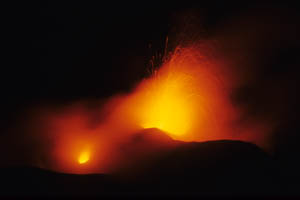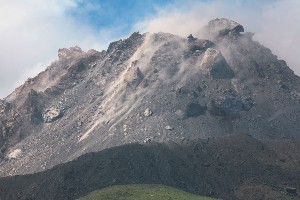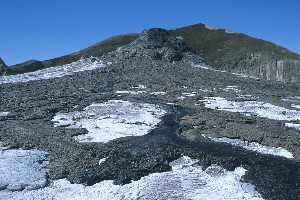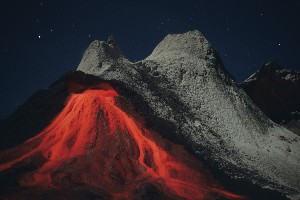

Short Exposure of Lava Flow at Etna Volcano, showing surface structure of flow. Taken in the evening (1/60sec f5.6 iso100)
Tripod mounted exposure of same flow at Etna Volcano. Taken in evening (2sec f5.6 iso100). Note that flow is burnt out with no visible surface structure, but angle of shot reduces size of burnt out area and exposure length makes context of flow visible.









